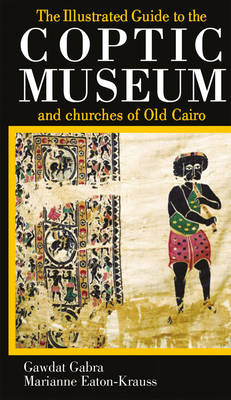
Bedankt voor het vertrouwen het afgelopen jaar! Om jou te bedanken bieden we GRATIS verzending (in België) aan op alles gedurende de hele maand januari.
- Afhalen na 1 uur in een winkel met voorraad
- Gratis thuislevering in België vanaf € 30
- Ruim aanbod met 7 miljoen producten
Bedankt voor het vertrouwen het afgelopen jaar! Om jou te bedanken bieden we GRATIS verzending (in België) aan op alles gedurende de hele maand januari.
- Afhalen na 1 uur in een winkel met voorraad
- Gratis thuislevering in België vanaf € 30
- Ruim aanbod met 7 miljoen producten
Zoeken
The Illustrated Guide to the Coptic Museum and Churches of Old Cairo
Gawdat Gabra
Paperback | Engels
€ 34,95
+ 69 punten
Omschrijving
Egypt's Coptic Church is one of the oldest in the world, encompassing two millennia of history, tradition, and culture. The Coptic Museum, founded in Old Cairo in 1908, houses the world's largest and most exquisite collection of Coptic artifacts, representing every historical era, from the earliest Christian period to the nineteenth century. After undergoing extensive renovations and repair, the Coptic Museum is open to the public again, making this richly informative and illustrated book very timely for anyone interested in this rich artistic heritage. Structured as a guide, but fully illustrated with superb color photographs, this book suggests a simple but comprehensive itinerary through one of Egypt's most fascinating museums. Taking readers through the various exhibits, this useful guidebook explains and illuminates the aesthetic and religious importance of each of the museum's works on display, such as icons, stelae, sculptures, wall paintings, wooden altar screens, liturgical implements, and vestments and bible caskets. Textiles, ceramics and documents (including the Nag Hammadi Gnostic library from the fourth century, one of the most important collections of papyri in the world) provide valuable insights into the economic and social life of Egypt's Copts over the last two thousand years.
Specificaties
Betrokkenen
- Auteur(s):
- Uitgeverij:
Inhoud
- Aantal bladzijden:
- 308
- Taal:
- Engels
Eigenschappen
- Productcode (EAN):
- 9789774160073
- Verschijningsdatum:
- 1/09/2007
- Uitvoering:
- Paperback
- Formaat:
- Trade paperback (VS)
- Afmetingen:
- 127 mm x 216 mm
- Gewicht:
- 521 g

Alleen bij Standaard Boekhandel
+ 69 punten op je klantenkaart van Standaard Boekhandel
Beoordelingen
We publiceren alleen reviews die voldoen aan de voorwaarden voor reviews. Bekijk onze voorwaarden voor reviews.









